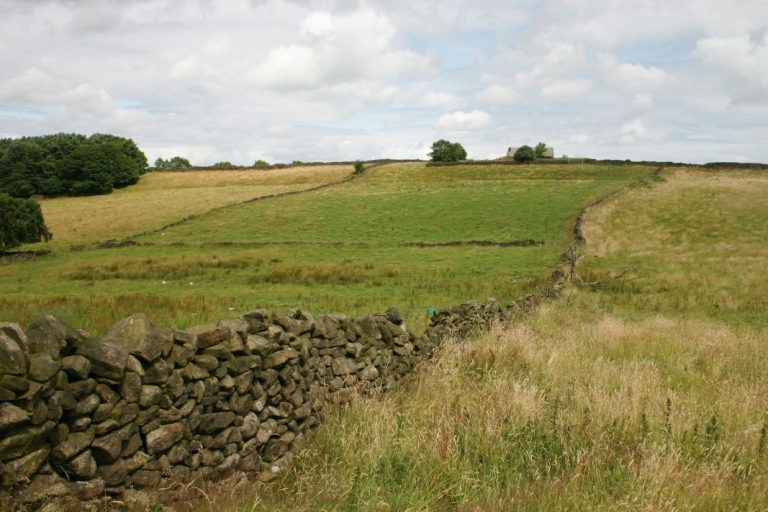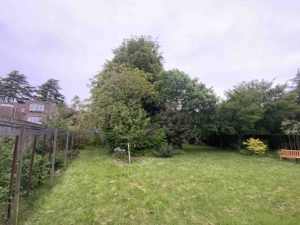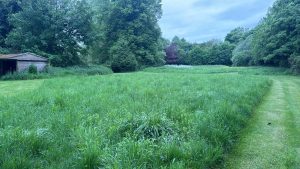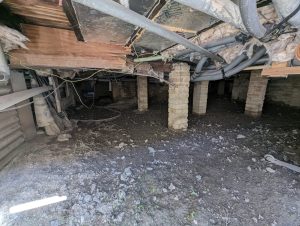Preliminary Roost Assessment (PRA) Survey
Planning-ready bat assessments for homes, conversions and development projects across England and Wales.
Fast, clear and proportionate PRA surveys that establish roost potential, confirm planning risk, and set out a predictable route forward — with reporting written for planners, developers and homeowners.
Do you need a PRA?
For planners and developers:
A PRA is the gateway assessment that determines the level of survey required. Submitting planning without it usually results in validation delays or seasonal postponement.
For homeowners:
A PRA provides clarity, prevents unexpected survey requests, and ensures work remains lawful.
You are likely to need a Preliminary Roost Assessment if your project involves:
- Loft conversions or roof works
- Demolition of any age of building
- Refurbishment or re-cladding
- Tree works (mature trees, cracks, cavities)
- Extensions involving roof lines or eaves
- Barn conversions, agricultural buildings, outbuildings
- Older structures (pre-1990 are especially scrutinised)
- Any site where your PEA flagged roost potential
- Planning officers requesting a bat assessment


What is a Preliminary Roost Assessment (PRA)?
A Preliminary Roost Assessment is the first stage of a roosting bats or nesting birds survey. It is a structured inspection of buildings, trees or structures to identify whether bats or birds could be using them.
A roost doesn’t necessarily look like a nest.
Bats use surprisingly small openings and often leave no visible signs at all — which is why planners require PRA evidence before demolition, roof works or redevelopment.
The PRA determines roost potential (negligible, low, moderate or high) and whether a Dusk Emergence Survey is legally required.
Trigger points — signs your site needs a PEA
Before development, planners will expect a PRA if any of the following apply:
Early warning signs:
- lifted tiles, gaps in facias or flashing
- gaps along ridge lines and under roof tiles
- cavity walls or hollow voids
- cracks, crevices and weathered brickwork
- internal signs such as droppings, staining or feeding remains
- mature trees with splits, hollows or peeling bark
- proximity to woodland, hedgerows or water
The PRA identifies the level of risk before you commit to further surveys or design changes.
These small details regularly trigger planning queries — a PRA resolves them early and keeps your project on-track.
What We Deliver
We provide a robust, planning-ready PRA with clear interpretation and next steps.
| Service | Purpose | Outcome |
|---|---|---|
| Preliminary Roost Assessment (PRA) | Identify bat roost or nesting bird potential in buildings/trees | Negligible/Low/Moderate/High classification + clear next steps |
| Internal/Endoscope Inspection | Check accessible features for evidence | Rapid confirmation where features allow |
| Dusk Emergence Surveys (if required) | Confirm presence/ likely absence | Legally defensible results for planning |
| Activity Surveys | Assess wider site use | Data for layout, lighting, design & mitigation |
| Mitigation & Licensing Support | If roosts are confirmed | Proportionate, lawful measures aligned to your programme |
Every recommendation is explained in practical terms, so you know exactly what each step means for your build schedule.
How it Works
Our process is designed to remove friction and keep decisions moving.

Scope & Schedule
Send the site location, timeline and project details. We confirm the exact level of survey required.

Fieldwork
PRA surveys are available year-round. Internal inspections and endoscopes used where safe and appropriate.

Reporting & Interpretation
Concise, defensible recommendations outlining next steps and programme impact.
Timing & Survey Windows
Missing the Spring emergence window normally means waiting until next year.
We schedule early to secure your position and protect your programme
PRA Survey
Year-round
Dusk Emergence Surveys
Seasonal: May – August
Activity Surveys
May–August
Why planning officers request PEAs
All bat roosts, even if bats are not present, are protected under UK law. Planning authorities must request evidence where roost potential exists.
Without a PRA, the risks include:
- planning refusal or validation queries
- enforced delays until Spring survey windows
- stop-work notices if roost features are found during works
- penalties for disturbing a roost
- redesign or licensing requirements
- increased project costs due to late discoveries
Relevant legislation:
- Conservation of Habitats and Species Regulations 2017
- Wildlife & Countryside Act 1981
- National Planning Policy Framework (NPPF)
- Local Authority biodiversity policy
Our commitment:
We deliver PRA surveys to recognised UK standards, strict legal expectations, and planning-authority requirements — with reporting built for scrutiny, not just submission.
Our Approach
We understand the scrutiny that comes with ecology and meet it with clarity, accuracy and planning-focused delivery.
Your planning-ready report will include:
- Roost potential classification (negligible/low/moderate/high)
- Clear interpretation: what the rating means for planning
- Photographs, evidence and rationale
- reasoning behind classification
- Presence/likely absence results (if emergence needed)
- Planning-ready report
- Clear, actionable next steps
- any need for emergence surveys
- clear explanation of what that means for planning
- timelines your contractors can work around
- Practical, legally compliant mitigation routes
Evidence that satisfies planning and guides project teams.
Why homeowners, planners and developers choose ProHort:
- Nationwide capability across England and Wales
- Programme-led scheduling
- Reports designed for LPA scrutiny
- Straight, practical communication
- Specialists in development-focused ecology
- Transparent interpretation — no vague language
- High trust and high clarity, reinforced at every stage
- Fast-track turnaround option.
How to interpret your PRA Report
Many clients, especially homeowners, are unsure what “negligible”, “low”, “moderate” or “high” means in practice.
Your report explains:
- Whether bats were present
- What “likely absence” means legally
- Whether any parts of your project can proceed now
- Whether timing restrictions apply
- Whether a licence is required (only if a roost is confirmed)
- How to plan works safely and legally
We also add summaries, so you understand exactly what the outcome means for your build, budget and schedule.
Case Insight
Your Next Step
FAQ - Preliminary Roost Assessment
What is a Preliminary Roost Assessment (PRA)?
A PRA is an ecologist-led inspection of buildings or trees to identify potential bat roost or nesting bird features and assess the likelihood of bats or birds using the structure. It determines the site’s “roost potential rating” (negligible / low / moderate / high) and confirms whether dusk emergence surveys are required for planning.
Do I need a PRA?
Most developments that involve roof works, demolition, conversions, barn alterations or tree removal will require a PRA — even if the property appears modern or well-sealed. LPAs frequently request PRA evidence before validating planning applications.
What happens during a PRA?
An ecologist inspects the exterior and interior (where accessible) for roost features such as lifted tiles, gaps, cracks, cavities, soffits, timber joints or crevices. They also look for bat signs such as droppings, staining or feeding remains. Findings are used to assign a roost potential level.
What does “negligible/low / moderate / high roost potential” mean?
These classifications indicate the likelihood that bats could use the building or tree.
- Negligible = no features for roosting bats
- Low potential = some features that may support bats
- Moderate potential = several features likely to be used
- High potential = strong evidence or ideal conditions
Each level influences whether dusk emergence surveys are required.
Is a PRA enough for planning?
Sometimes. If the PRA confirms negligible potential, it is often sufficient. If low, moderate or high potential is identified, most LPAs require dusk emergence surveys before determining the application.
How long does a PRA take?
Typically, 1–2 hours on-site, depending on property size and access. Reports are usually completed within standard delivery times unless urgent scheduling is required.
When can PRA surveys be done?
All year round. This makes PRA the best early-stage action to prevent seasonal delays.
What if bats are found during a PRA?
If the ecologist finds clear signs of an active roost, this may trigger a need for a mitigation licence. We advise next steps immediately and outline safe, legal routes forward.
Do I need a licence after a PRA?
Only if the works risk disturbing or destroying a confirmed roost. Many projects avoid licensing entirely through timing, design tweaks or mitigation.
Will a PRA delay my planning application
No — a PRA speeds things up by confirming whether emergence surveys are needed. Early completion prevents validation queries and missed seasonal windows.
Can you do urgent PRA visits?
Yes. PRA assessments are available year-round and we prioritise time-sensitive development programmes.







